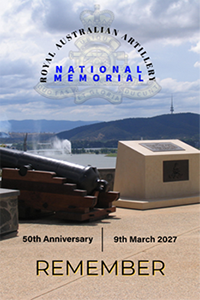|
||||||||||||||||||||||||||||||||||||||||||||||||||||||||||||||||||||||||||||||||||
| Have a Question / Feedback ? | Submit | Search Our Site |
|
The first known war-related memorials erected within Australia were those by a British regiment in Hobart, in 1850, for its troops killed in the New Zealand Wars of 1845-46, and a plaque in Sydney for those Australian colonial soldiers killed in the Sudan in 1885 (the first Australian (colonial) soldier to die on active service was Gunner Edward Lewis on 12th May 1885 and his body is buried at Suakin in the Sudan). The Australian Army first saw active service in South Africa during the South African (Second Boer) War of 1899-1902. The War initially involved Australian colonial troops in 1900; however, with Federation in 1901 the armies of the individual colonies were combined and served as one: the Australian Army. By the War’s end there were over one hundred Boer War memorials across the Country. The number of memorials within Australia dedicated to The Great War of 1914-19 is said to be well in excess of 1,600; this means that, on a ratio of the number of dead to memorials, Australia has proportionately more memorials to The Great War than any other nation in the world. One of the reasons why Australia has such a large number of war memorials is that, unlike other countries involved in The Great War, the Australian defence forces, along with those of South Africa, were entirely made-up of volunteers. Another contributing factor could be that, with the exception of Major General William Bridges in 1915, no Australian dead were brought home from The Great War or from the Second World War. They either perished at sea or were buried in cemeteries across the world, in the lands in which they fell. War memorials take various forms, from conventional statues, such as the Desert Mounted Corps Memorial, in Canberra’s Anzac Parade, to a more modern style such as the Australian Service Nurses’ Memorial, also in Canberra. Regardless of their shape and size, all of these memorials have symbolic significance for the Nation. They are dedicated to those servicemen and women who served, and those that died, for Australia. |
|||||||||||||||||||||||||||||||||||||||||||||||||||||||||||||||||||||||||||||||
AUSTRALIAN GUNNERS WHO DIED SERVING THE NATION To date the number of gunners that have died on active service are as follows:
|
|||||||||||||||||||||||||||||||||||||||||||||||||||||||||||||||||||||||||||||||
| Sudan Campaign | 4 | ||||||||||||||||||||||||||||||||||||||||||||||||||||||||||||||||||||||||||||||
| South African (Second Boer) War | 3 | ||||||||||||||||||||||||||||||||||||||||||||||||||||||||||||||||||||||||||||||
| The Great War | 3,624 | ||||||||||||||||||||||||||||||||||||||||||||||||||||||||||||||||||||||||||||||
| Second World War | 2,306 | ||||||||||||||||||||||||||||||||||||||||||||||||||||||||||||||||||||||||||||||
| Malayan Emergency | 3 | ||||||||||||||||||||||||||||||||||||||||||||||||||||||||||||||||||||||||||||||
| Korean War | 1 | ||||||||||||||||||||||||||||||||||||||||||||||||||||||||||||||||||||||||||||||
| South East Asia | 1 | ||||||||||||||||||||||||||||||||||||||||||||||||||||||||||||||||||||||||||||||
| The (Indonesian) Confrontation | 2 | ||||||||||||||||||||||||||||||||||||||||||||||||||||||||||||||||||||||||||||||
| Vietnam War | 17 | ||||||||||||||||||||||||||||||||||||||||||||||||||||||||||||||||||||||||||||||
| Afghanistan | 2 | ||||||||||||||||||||||||||||||||||||||||||||||||||||||||||||||||||||||||||||||
| We Will Remember Them | |||||||||||||||||||||||||||||||||||||||||||||||||||||||||||||||||||||||||||||||
|
|||||||||||||||||||||||||||||||||||||||||||||||||||||||||||||||||||||||||||||||
Everywhere Whither Right and Glory Lead |
||||




